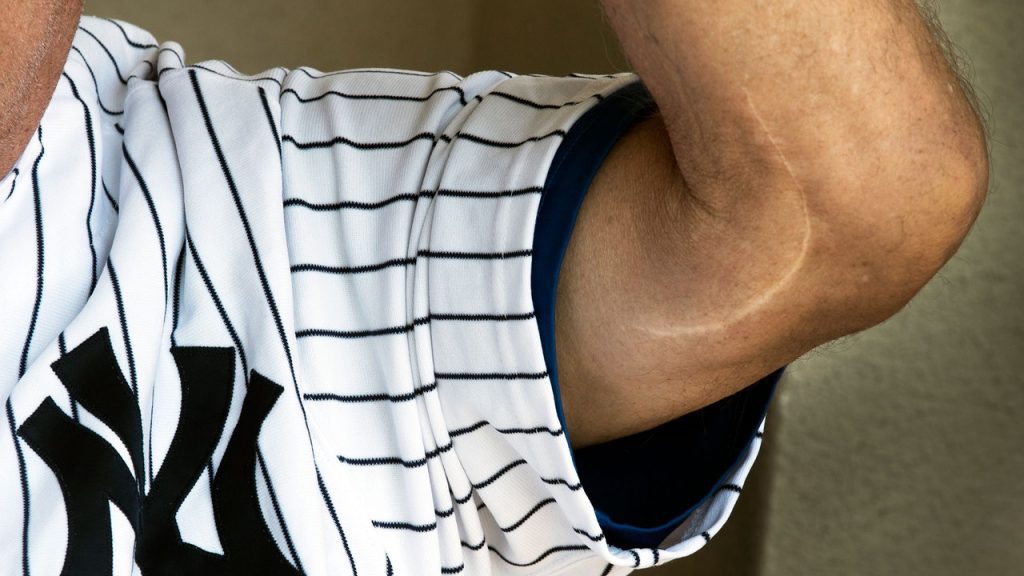In Keith Meister’s private surgical practice, he meticulously marks a six-centimeter incision on a baseball pitcher’s elbow. As he opens the joint, he is confronted with a complex structure of ligaments, tendons, and bone—each at risk of serious injury. With a two-pronged retractor, he holds the skin tight and employs a specialized arthroscopy camera to document the condition of the injury.
Meister starts by evaluating a potential tear in the ulnar collateral ligament (U.C.L.), a crucial component for pitchers. He captures images for his record-keeping. Next, he retrieves a tendon from the player’s wrist or thigh to replace the damaged U.C.L., taking additional photographs during the procedure. To further fortify the ligament, Meister utilizes a thin, synthetic braided fiber resembling a shoelace, sewing it into place with an embroidery-like technique. This innovative approach combines traditional Tommy John surgery—developed by Frank Jobe in the 1970s—with modern technology, creating what is termed hybrid surgery.
“I take fifteen to twenty photographs of every case I do,” Meister commented. “This practice has allowed me to revisit injury patterns and match them with MRI scans, enhancing my ability to assess and treat these conditions more logically.”
Based in Texas, Meister operates on an average of seven pitchers’ elbows each day during his “busy season,” which occurs in the weeks leading up to and shortly after the start of Major League Baseball’s season. During this period, pitchers are statistically more likely to require elbow surgery, a phenomenon attributed to their training routines in the off-season, though experts remain divided on the exact causes. What is undeniable is the rising incidence of elbow injuries, making surgery a common outcome of intense pitching.
Notable players, such as two-way star Shohei Ohtani and Atlanta Braves’ Spencer Strider, exemplify this trend, both undergoing elbow surgeries. Yankees pitcher Gerrit Cole also had elbow surgery in spring training, reflecting on the vital role the orthopedic surgery community plays. “They offer a critical service for players eager to compete,” Cole stated.
In recent years, there has been a shift in pitchers’ training focus, emphasizing velocity and ball movement over precision. This modern approach, aimed at inducing swings and misses, jeopardizes the health of pitchers. Hall of Famer Greg Maddux, known for his precision, might not thrive in today’s game, where speed trumps skill. Max Scherzer, a seasoned pitcher, echoed concerns regarding the sustainability of current pitching strategies, noting the alarming health trends among pitchers.
As elbow injuries have escalated over the past twenty years, Meister observes a worrying shift in the types of tears, regarding the heightened demands placed on pitchers by contemporary pitching styles that emphasize horizontal movement. This change has resulted in distinct injury patterns, leading to more complex repairs and raising concerns about the future of player health and longevity in the sport, particularly among younger players who may be modeling their techniques after professional standards.



